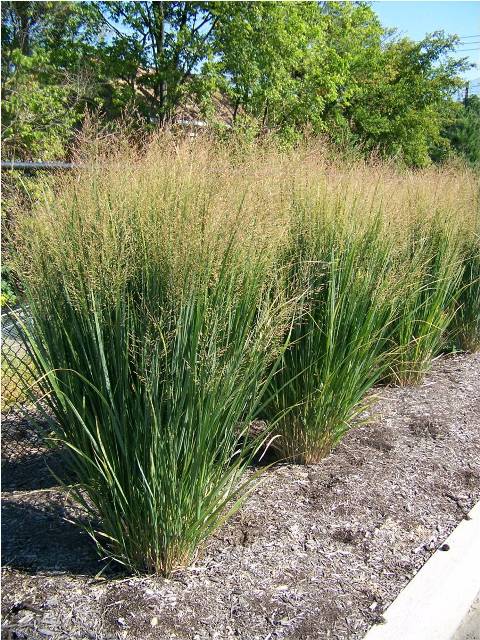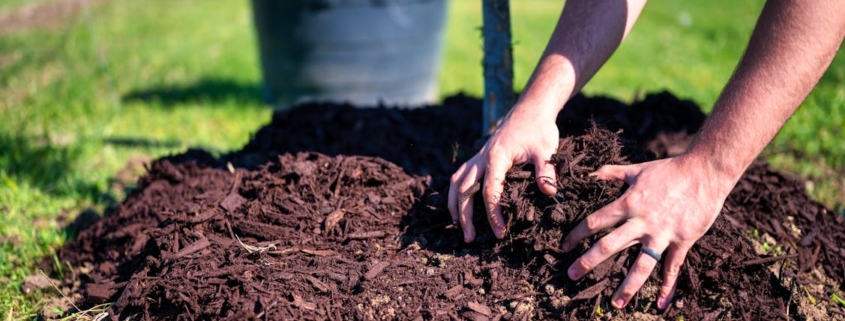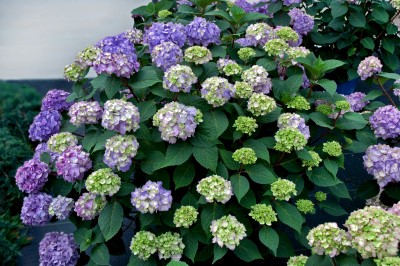Mulching your trees and landscape beds has many benefits. Mulch helps retain moisture in the soil, keeps the soil and roots at a more consistent temperature, and adds in some nutrients as it decomposes.
Hydrangeas have become a staple in the landscaping word, and for good reason! Large, long lasting blooms, multiple color options, different sizes to match your needs, and over all and easy maintenance plant. Pruning hydrangeas is simple, you just need to know what kind you have!
 Spring is the time to trim your ornamental and native grasses. You will want to get this done before the new growth begins.
Spring is the time to trim your ornamental and native grasses. You will want to get this done before the new growth begins.
Cut all of your grasses down to just a few inches above the ground. You want to remove all of last year’s foliage to allow the new growth to emerge from the crowns.
Some grasses will start to grow right away, (like Karl Foerster), but be patient with Switch or Flame Grasses as they will not show signs of new growth until the soil warms up. Spring is also the best time to divide your grasses if they have gotten to large.
Contact Paul Swartz Nursery today for more tips, special offers and plant care advice –
262.537-8083
Pruned roses produce almost twice as many flowers as those plants that don’t get pruned.
Start at the bottom and work your way up. Wear gloves to protect your hands. Remove any dead, shriveled, black, diseased or broken wood.
Make the cuts on an angle, about 1/4″ above buds. Tea roses should be 6″ – 8″ long with 3 to 5 strong, healthy canes per plant. Prune floribundas to 8″ – 12″ in length with 8 to 10 strong canes per plant. Just remove about 1/3 of the growth on shrub roses and you are done!
Don’t worry about making mistakes, it’s hard to kill a rose with bad pruning. Prune less in the beginning, you can always go back to cut more.
Summer is a great time for an addition of mulch to your planting beds for weed prevention and better soil moisture retention (2-3” layer). Be very careful not to mound the mulch up around the trunks of trees, as it can kill the tree.
Maintaining good soil moisture is important – especially for new plantings. New plantings typically take about 6 weeks to get some new roots established and watering can be less frequent and more at each application. Ideally, a good, slow, deep watering is required about every 7-10 days for trees and shrubs after they are established. Newly planted B&B and container plants need to be watched very carefully during that first 6 week break-in period after planting or until they have had a chance to get rooted in. The easiest method of checking to see if a plant needs water is to stick your finger in the soil it was planted with, and if it feels dry – water it, and if it feels moist – skip watering it. Typically sprinkler systems do not work well for establishing new plantings unless they are putting water on the roots where needed.
Winter burn is discoloration resulting from plants not able to take up moisture from the ground because of our harsh winter and the frozen ground. This can cause needles or leaves of evergreens to dry out.
Evergreens can loose moisture through their leaves or needles in the winter months. When the ground is frozen, the plants’ roots cannot absorb the moisture it needs. Add some sunny days thru the winter and evaporation increases. Discolored or “burned” foliage may start to appear. This discoloration usually appears on the side of the plant facing the sun or the side with exposure to the wind. Please note, this can also occur with plants too close to a dryer or furnace vent.
Please be patient with these plants. Make sure they have adequate water and wait to trim until new growth appears.
Welcome
We know you have many options when it comes to landscaping solutions for your home or business and we truly appreciate each of our customers. To experience the hands-on approach of our design staff, please contact us today
Paul Swartz Nursery
30728 93rd Street
Burlington, WI 53105
(Located 2 miles north of Wilmot, WI)
Phone: 262-537-8083
Fax: 262-537-8092
Email: info@paulswartznursery.com
Office Hours
Spring Hours (April 1st – May 24th)
Mon-Fri: 7:00 am- 5:00 pm
Sat: 8:00 am- 4:00 pm
Sun: Closed
Summer/Fall Hours (May 25th – October 31st)
Mon-Fri: 7:00 am- 5:00 pm
Sat: 8:00 am- Noon
Sun: Closed
Winter Hours (November 1st – March 31st)
Mon-Fri: 7:00 am- 4:00 pm
Sat-Sun: Closed


